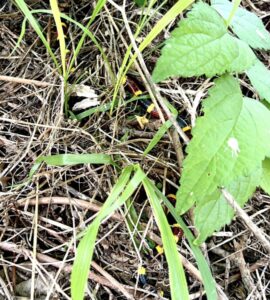Austin, located in Central Texas, is home to a wide variety of snakes, some poisonous and many not. But what are the types of snakes in Austin Texas?
Austin is home to a variety of snakes, both venomous and non-venomous. Venomous snakes found in the area include the Western Diamondback Rattlesnake, Copperhead, and Coral Snake. Non-venomous species include the Rat Snake, Bull Snake, and Coachwhip.
As a rural homeowner, farmer, or rancher, understanding the different snake species can help you better coexist with these fascinating reptiles and ensure your safety.
In this article, I will explore both non-venomous and venomous snakes found in Austin.
You’ll learn about common species such as coral snakes and western diamondback rattlesnakes along with their distinctive features for identification purposes. Additionally, I will discuss water moccasins and Texas rat snakes which are often encountered by residents in central Texas.
Moreover, I’ll give you the scoop on how to keep from getting bit and what steps to take (or not) when one of these reptiles bites. By familiarizing yourself with the types of snakes in Austin Texas and following my guidelines for bite prevention and response measures, you can minimize risks while appreciating the beauty these serpents bring to our natural landscape.
Table of Contents:
- What Types of Non-Venomous Snakes Live in Austin, Texas?
- What Types of Venomous Snakes Live in Austin, Texas?
- Types of Snakes in Austin, Texas
- How to Prevent Snake Bites in Austin, Texas
- What To Do if You Are Bitten by a Snake
- What Should You Not Do if You Are Bitten by a Snake?
- FAQs
- Conclusion

What Types of Non-Venomous Snakes Live in Austin, Texas?
Austin, Texas is home to a variety of non-venomous snakes that play essential roles in the local ecosystem.
Some common species include the Texas Rat Snake, Texas Garter Snake, and Hognose Snake. These slithering creatures are oftentimes spotted close to bodies of water, and woodlands, or concealed beneath stones and rubbish. They primarily feed on small animals such as rodents and insects, helping to control pest populations.
Non-venomous snakes in Austin Texas include the Great Plains Rat Snake, Bullsnake, and Coachwhip.
These snakes tend to be tranquil when met and will not harm people if they are left undisturbed.
Texas Rat Snake
The Texas rat snake is a non-venomous species commonly found throughout Central Texas, including the Austin area.
These snakes are excellent climbers and can often be spotted in trees or on fences searching for prey such as rodents and birds. Dark patches adorn their backs, assisting them in blending into the environment.
- Habitat: Wooded areas, grasslands, and near water sources.
- Size: Up to 7 feet long.
- Diet: Small mammals, birds, and eggs.
What Types of Venomous Snakes Live in Austin, Texas?
In Austin, Texas, there are four main types of venomous snakes that residents should be aware of.
These include the Copperhead, Timber Rattlesnake, Mojave Rattlesnake, and the infamous Western Diamondback Rattlesnake. Each species has its own unique habitat preferences and behaviors.
For example, Copperheads prefer wooded areas near water sources while Western Diamondbacks can often be found in rocky terrains or tall grasses.
Western Diamondback Rattlesnake
The western diamondback rattlesnake is a venomous species found throughout Texas, including the Austin area.
These snakes have a distinctive rattle on their tail, which they use as a warning signal when threatened. They are known for their diamond-shaped markings along their back and can be found in a variety of habitats, including deserts, grasslands, and rocky areas.
- Habitat: Deserts, grasslands, and rocky areas.
- Size: Up to 7 feet long.
- Diet: Small mammals, birds, and reptiles.
Of course, there are several types of rattlesnakes in the United States, but the diamondback is the most common species of rattlesnakes in Austin and the most common venomous snake.
According to the Texas Parks and Wildlife Department, there are 9 other types of rattlesnakes in Texas, including:
- Timber rattlesnake
- Mottled Rock rattlesnake
- Banded Rock rattlesnake
- Blacktail rattlesnake
- Mojave rattlesnake
- Prairie rattlesnake
- Western massasauga
- Desert massasauga
Texas Coral Snakes in Austin
The venomous coral snake is a venomous species found in South Texas, including the Austin area. These snakes have distinctive red, yellow, and black bands along their body and are often confused with non-venomous species such as the scarlet snake. It’s important to remember the rhyme “red on yellow, kill a fellow” to help identify this dangerous snake.
- Habitat: Woodlands, scrublands, and near water sources.
- Size: Up to 3 feet long.
- Diet: Small reptiles, amphibians, and insects.
Coral snakes in Austin are a rarity, so it is important to be conscious of their presence. Comprehending the conduct of water moccasins is essential for guaranteeing safety when out in nature, as they too can be located in Austin.
That being said, being an Austinite, I have seen Coral snakes in the wild 3 times, including just 1 week ago at the time of this writing (in Oak Hill which is southwest Austin). But they are probably more common in the Texas hill country. The one I saw a week ago is pictured above as I was able to snap a pic before he scurried away.
Water Moccasins in Austin
Also known as cottonmouth snakes, water moccasins are venomous pit vipers commonly found in Austin, Texas. These snakes prefer habitats near bodies of water, such as rivers, lakes, and swamps. These reptiles have a dark hue and robust physique, making them easily recognizable.
- Habitat: Water moccasins thrive in areas with abundant freshwater sources like ponds or creeks.
- Diet: Their diet consists mainly of fish, amphibians, and small mammals.
- Behavior: These snakes are generally nocturnal but may also be active during the day if temperatures permit.
Be vigilant of the potentially hazardous Water Moccasins in Austin; they should not be disregarded. Moving on, Texas Rat Snakes can also be found in the area and should not be overlooked either.
Copperheads in Austin
The copperhead snake, also known as the broad-banded copperhead, is a common sight in Austin, Texas. Copperheads are venomous and should be approached with caution.
If you encounter one, keep a safe distance and avoid startling it. If you are bitten, seek medical attention immediately. Copperheads are not typically aggressive, and bites are rare, but it is still important to be aware of their presence in the area.
- Habitat: They prefer wooded areas.
- Diet: Their diet consists mainly of rodents and insects.
- Behavior: They are most active during the warmer months.
How to Prevent Snake Bites in Austin, Texas
Here are some tips to help you avoid getting bitten:
- Be cautious around water sources, tall grass, fallen logs, outcroppings, and animal burrows, as these are common habitats for snakes.
- If you encounter a snake, freeze and back away slowly. Do not touch the snake.
- Never handle venomous snakes, even if they are dead or decapitated.
- Wear heavy footwear and consider using snake-proof trousers, leggings, or boots to reduce the risk of bites.
By taking these precautions, you can reduce your risk of encountering a snake and getting bitten.
Avoiding snake-prone areas, donning protective gear while outside, and being able to recognize venomous varieties in your locality are all means of minimizing the risk of a snakebite. Should you encounter a snakebite, it is essential to seek medical attention promptly.
I still remember my friend Pèr walking in tall grass, wearing shorts while looking through a pair of binoculars at McKinney Falls State Park in Austin.
Guess what he stepped on accidentally?
That’s right. A rattlesnake! It bit him good although the anti-venom actually caused him more harm than the venom itself. But the moral of the story is to watch where you are going when in nature!
What types of snakes are in Austin? Find out in your spare time when you’re there for the @iHeartCountry Festival! Win your way at 6:10pm! pic.twitter.com/vd1vXxjQJe
— US103.5 (@US1035) April 24, 2017
What To Do if You Are Bitten by a Snake
If bitten by a snake, especially rattlesnake bites, it is imperative to remain composed and get medical assistance without delay. Call 911 or your local EMS for help. Antivenom is the best treatment for snake bites, and administering it quickly can prevent irreversible damage.
To aid in the proper identification of the snake, try to take a photo from a safe distance if possible. This will help healthcare professionals determine the appropriate course of action when treating your bite.
Remaining composed and seeking medical care right away if bitten by a snake is vital. It is imperative to be aware of the right and wrong steps when confronted with a snake bite, thus the following section will cover what should not be done.
What Should You Not Do if You Are Bitten by a Snake?
If you are bitten by a snake, it is important to avoid certain actions.
First, do not drive yourself to the hospital as dizziness or fainting may occur. Instead, call 911 or local EMS for assistance. Don’t wait ’til signs show; quickly go to the doctor. Additionally, refrain from slashing or cutting the wound and never attempt to suck out the venom.
The CDC recommends taking a photo of the snake from a safe distance (if possible) for proper identification at the hospital.
FAQs
Are Snakes a Problem in Austin, Texas?
In general, snakes are not considered a significant problem in Austin.
While some venomous species pose potential dangers to humans or pets if encountered, most local snake populations help control rodent populations and maintain ecological balance. However, it’s essential for residents to be aware of their presence and take necessary precautions when outdoors.
Does Austin, Texas Have Poisonous Snakes?
Yes, there are several poisonous (venomous) snake species present in Austin. These include the Western Diamondback Rattlesnake, Coral Snake, Water Moccasin (Cottonmouth), and Copperhead Snakes, among others.
What Is the Most Common Snake in Central Texas?
The Texas Rat Snake, which is non-venomous with an average length of 4-6 feet long, is one of the most commonly encountered snakes throughout Central Texas due to its wide range of habitats such as forests or urban areas where they hunt rodents effectively.
Conclusion
Living in Austin, Texas means that you may encounter various types of snakes.
It is important to be aware of the venomous and non-venomous snakes that are native to Austin, such as coral snakes, water moccasins, Texas rat snakes, and western diamondback rattlesnakes; wearing protective clothing and footwear when working outdoors can help prevent a snake bite emergency while avoiding certain actions like using tourniquets or trying to suck out the venom if one should occur.
It is vital to wear protective clothing and footwear when working outside in order to prevent a snake bite. In case of a snake bite emergency, seek medical attention immediately and avoid certain actions like using tourniquets or trying to suck out the venom.
Image by Trudi Nichols from Pixabay and

